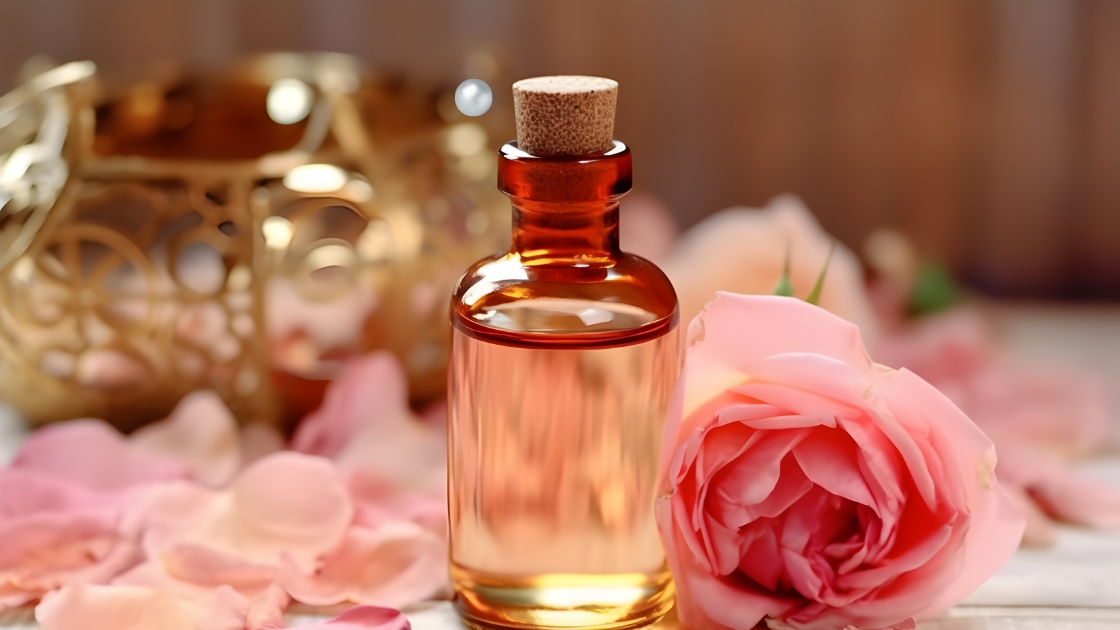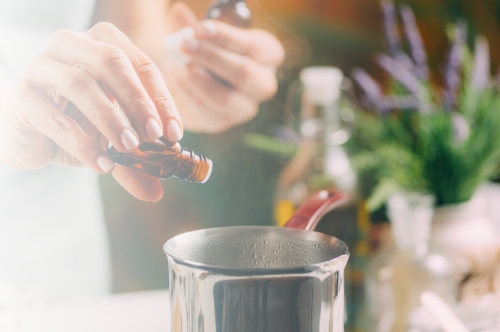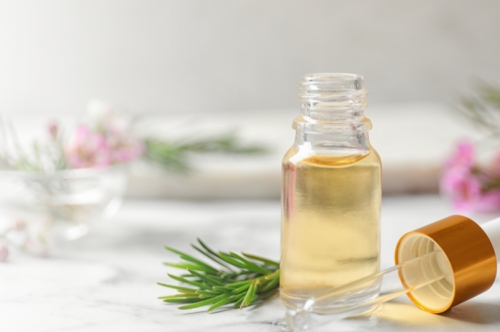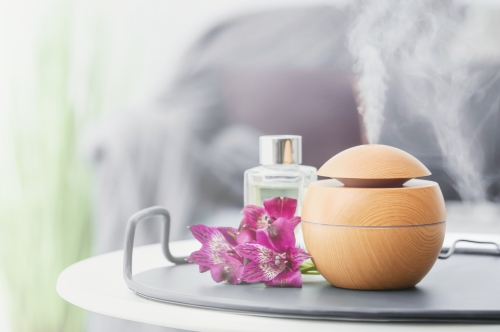Perfume Ingredients and Extraction Methods: An Exploration

What are Perfume Ingredients?
Perfume ingredients are a diverse range of fragrant substances utilised in the art of fragrance-making. These ingredients are carefully selected and blended to create captivating and unique scents that appeal to our senses. The history of perfume dates back thousands of years, and throughout the ages, various cultures have harnessed the aromatic properties of natural materials to craft enticing perfumes.
One of the primary sources of perfume ingredients comes from plants. Essential oils are a key category among these substances. They are concentrated oils derived from plant parts such as flowers, leaves, fruits, bark, and resins, obtained through processes like steam distillation or cold pressing. Each essential oil carries the distinct fragrance of the plant it's derived from, such as lavender, rose, citrus, or sandalwood. These essential oils serve as the core building blocks of many perfumes.
Another important group of perfume ingredients is absolutes. Absolutes are highly concentrated aromatic substances obtained through solvent extraction from delicate flowers like jasmine and tuberose. The solvent extraction process allows for the capture of fragrance components that might be damaged or lost during traditional distillation methods.
In addition to plant-based materials, perfumers also incorporate synthetic ingredients into their creations. These synthetic compounds are chemically derived and are designed to mimic the scents of natural substances or to introduce completely novel fragrance profiles. Synthetics provide perfumers with a vast array of options, allowing them to explore creative combinations and achieve scents that might be impossible to create using only natural ingredients.
Furthermore, some perfumes include animal-derived ingredients, such as musk, ambergris, and civet. However, in modern times, ethical and environmental concerns have led to the reduction or replacement of these animal-based materials with synthetic alternatives.
Perfume creation is an intricate art that involves blending various perfume ingredients to achieve a well-balanced, harmonious, and long-lasting fragrance. Perfumers, also known as "noses," have a deep understanding of these perfume ingredients' characteristics and how they interact with one another. Their expertise and creativity contribute to the captivating and diverse world of perfumery, where scents can evoke emotions, memories, and a sense of luxury.
The Art of Perfumery and Perfume Ingredients
(The art of perfumery involves exploring plant-based ingredients and their extraction techniques to create beautiful fragrances. Elaborate more on this)The art of perfumery is a captivating and intricate craft that revolves around the exploration and manipulation of plant-based ingredients to create beautiful and alluring fragrances. Perfumers, often referred to as "noses," are highly skilled artisans who possess a deep understanding of the characteristics of various aromatic substances and how they interact to form complex scent compositions.
At the heart of perfumery are the natural plant-based ingredients. These include essential oils, absolutes, and other aromatic extracts derived from a wide range of botanical sources. Each of these ingredients has its unique olfactory profile, and perfumers carefully select and combine them to create a symphony of scents that will blend harmoniously in the final perfume composition.
Essential oils are extracted from plants using various techniques, such as steam distillation, cold pressing, and enfleurage. The choice of extraction method depends on the type of plant and the specific aromatic compounds desired. For example, delicate flowers like roses and jasmine are often subjected to solvent extraction to obtain absolutes, as their fragrant molecules can be damaged by high heat.
Perfumers must also consider the concept of perfume notes during the creation process. Perfume notes refer to the different phases of a fragrance as it evolves over time upon application to the skin. A fragrance typically consists of top, middle (or heart), and base notes. The top notes are the initial burst of scents that are perceived immediately after application. They are often light, fresh, and fleeting. The middle notes emerge after the top notes fade and form the heart of the fragrance, providing its character and personality. Finally, the base notes are the foundation of the fragrance, offering depth and longevity to the scent.
Blending these various perfume notes is a delicate and nuanced art, as each ingredient contributes to the overall character of the fragrance. Perfumers must carefully balance the proportions of each ingredient to create a well-rounded and captivating scent that remains stable over time.
Furthermore, perfumers also consider the concept of fragrance families or categories. Common fragrance families include floral, oriental, woody, citrus, and aquatic, among others. Understanding these families helps perfumers categorize and create scents that fit into particular styles or preferences.
The art of perfumery goes beyond just mixing ingredients; it involves a profound knowledge of the science behind scent molecules and how they interact with our olfactory system. Perfumers are constantly experimenting with new combinations, pushing boundaries, and seeking inspiration from nature, art, culture, and emotions to craft unique and evocative fragrances.
In recent times, the field of perfumery has also embraced sustainable and ethical practices. There is a growing focus on using responsibly sourced natural ingredients, employing eco-friendly extraction techniques, and reducing the environmental impact of the fragrance industry.
In conclusion, the art of perfumery is a harmonious fusion of science, creativity, and craftsmanship. Through the exploration of plant-based ingredients and their extraction techniques, perfumers bring to life a diverse array of beautiful fragrances that enchant our senses and evoke emotions, making perfume an essential and timeless aspect of human culture.
What is Resin?
Resin, in the context of perfumery, refers to a specific type of aromatic material obtained from various botanical sources. Resins are sticky and viscous substances that plants produce as a defence mechanism against injury or infection. These natural exudates are rich in aromatic compounds and possess a distinct, often warm and balsamic fragrance. Resins have been used in perfumery for centuries due to their unique and long-lasting scents, which add depth and complexity to fragrances.
Types of Resins Used in Perfumery
Several types of resins are commonly used in perfumery. Some of the most notable ones include:
- Frankincense: Derived from the Boswellia tree, frankincense resin has a woody, citrusy, and slightly spicy aroma. It is widely used in religious and spiritual rituals and has been a valued perfume ingredient for millennia.
- Myrrh: Obtained from the Commiphora tree, myrrh resin has a rich, earthy, and resinous scent with hints of sweetness. Like frankincense, myrrh has a deep historical significance and is frequently used in oriental and incense-like fragrances.
- Benzoin: Benzoin resin comes from the Styrax tree and possesses a warm, vanilla-like fragrance with sweet balsamic undertones. It is often used as a fixative in perfumery to help prolong the scent's longevity.
- Labdanum: Derived from the rockrose plant, labdanum resin has an animal, amber-like scent that adds complexity and depth to oriental and chypre fragrances.
- Opoponax: Also known as sweet myrrh, opoponax resin has a warm, spicy, and slightly sweet aroma. It is commonly used as a base note in oriental perfumes.
How Resins are Extracted
Resins are typically obtained through a process called "tapping." In this method, the plant's bark is cut or wounded, causing it to exude the resin as a protective response. The resin then hardens and is collected by scraping it off the bark or by other means. In some cases, resins can also be obtained through solvent extraction or steam distillation, particularly when used to create absolutes or essential oils.
Uses of Resins in Perfumery
Resins are valued for their fixative properties, which help anchor the other fragrance components, making the scent last longer on the skin. Additionally, their rich and complex aromas provide a solid foundation for various perfume compositions. Resins are often used as base notes in perfumes, contributing to the fragrance's longevity and overall character. Their warm, balsamic, and sometimes mystical scents evoke a sense of comfort and spirituality, making them popular choices in incense-like, oriental, and woody fragrances.
Resins are timeless and cherished ingredients in perfumery, providing a link to ancient traditions while still captivating modern audiences with their evocative and luxurious aromas.
Norex takes pride in offering the finest fragrances crafted with the absolute best perfume ingredients. Our perfumes are true artisans skilled in the art of blending these precious ingredients to create captivating and harmonious scents that linger on the skin and enchant the senses.
Frequently Asked Questions
1. What are the most common types of perfumery ingredients, and how are they extracted from plants?
The most common types of perfumery ingredients include essential oils, absolutes, CO2 extracts, and tinctures. Each of these ingredients is obtained through different extraction methods from various parts of plants.
2. Are there any ethical and sustainable methods for extracting perfumery ingredients from plants?
Yes, there are ethical and sustainable methods for extracting perfumery ingredients from plants. Some practices include sustainable farming, wild harvesting, and using environmentally friendly extraction techniques such as CO2 extraction and solvent-free methods. These methods aim to protect biodiversity, support local communities, and minimize the environmental impact of the fragrance industry.
3. What are the different methods used for perfume extraction, and how do they differ?
The different methods used for perfume extraction include steam distillation, solvent extraction, CO2 extraction, enfleurage, and cold pressing. They differ in the way they extract aromatic compounds from plants and the types of ingredients they yield. Steam distillation uses steam to extract essential oils from plant material, solvent extraction uses solvents to obtain absolutes, CO2 extraction uses carbon dioxide for select ingredients, enfleurage captures fragrances in fats, and cold pressing extracts oils from citrus rinds.
4. What is the difference between resin and essential oil in perfumery?
The main difference between resin and essential oil in perfumery lies in their extraction and composition. Resins are sticky and aromatic substances obtained from plants through tapping or exudation. They contain a complex mixture of aromatic compounds and are often used as base notes in perfumes. Essential oils, on the other hand, are concentrated oils extracted through steam distillation or cold pressing. They are lighter and more volatile than resins, often used for top and middle notes in fragrances.











